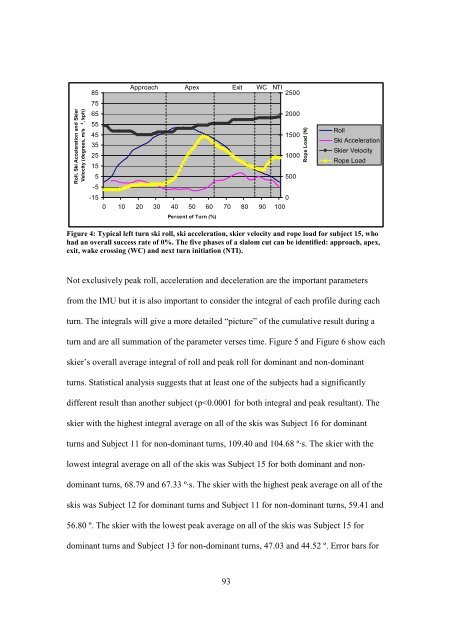Biomechanical P ... Slalom Water Skiing R1.pdf - Atrium - University ...
Biomechanical P ... Slalom Water Skiing R1.pdf - Atrium - University ...
Biomechanical P ... Slalom Water Skiing R1.pdf - Atrium - University ...
- No tags were found...
Create successful ePaper yourself
Turn your PDF publications into a flip-book with our unique Google optimized e-Paper software.
Roll, Ski Acceleration and SkierVelocity (degrees, m/s 2 , kph)85756555453525155-5-15Approach Apex Exit WC NTI250020001500100050000 10 20 30 40 50 60 70 80 90 100Percent of Turn (%)Rope Load (N)RollSki AccelerationSkier VelocityRope LoadFigure 4: Typical left turn ski roll, ski acceleration, skier velocity and rope load for subject 15, whohad an overall success rate of 0%. The five phases of a slalom cut can be identified: approach, apex,exit, wake crossing (WC) and next turn initiation (NTI).Not exclusively peak roll, acceleration and deceleration are the important parametersfrom the IMU but it is also important to consider the integral of each profile during eachturn. The integrals will give a more detailed “picture” of the cumulative result during aturn and are all summation of the parameter verses time. Figure 5 and Figure 6 show eachskier’s overall average integral of roll and peak roll for dominant and non-dominantturns. Statistical analysis suggests that at least one of the subjects had a significantlydifferent result than another subject (p
















